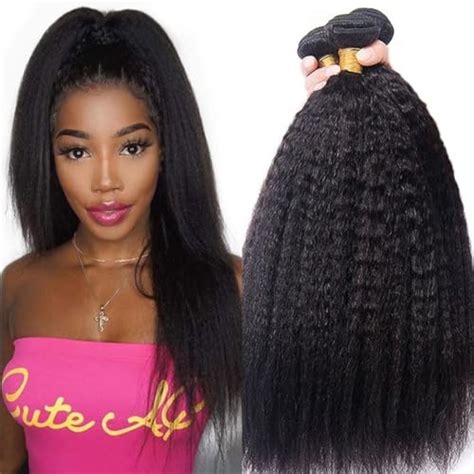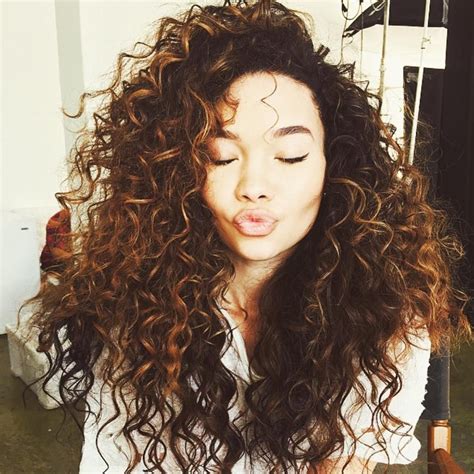Introduction

Natural hair has become increasingly popular in recent years, with individuals embracing their unique coils, curls, and textures. Whether you’re transitioning from chemically processed hair or simply seeking to enhance your natural aesthetic, a haircut designed specifically for natural hair can make all the difference. In this comprehensive guide, we will explore the different cutting techniques, styles, and products that can help you achieve your desired look while maintaining the health and beauty of your natural curls.
The Importance of Understanding Your Hair Type
Before embarking on a haircut journey, it’s essential to understand your hair type and texture. The porosity, density, and curl pattern of your hair will all influence the way it responds to cuts and styling.
- Porosity: Refers to the hair’s ability to absorb and retain moisture. High-porosity hair tends to be dry and frizzy, while low-porosity hair is more resistant to moisture.
- Density: Refers to the number of hair follicles on the scalp. High-density hair is thick and voluminous, while low-density hair is thinner and less dense.
- Curl Pattern: The shape and definition of your curls are determined by your hair’s natural curl pattern. There are four main curl patterns: Type 2 (wavy), Type 3 (curly), Type 4 (coily), and Type 5 (kinky).
Types of Haircuts for Natural Hair
Once you understand your hair type, you can begin exploring different haircut options. Here are a few popular choices:
- DevaCut: Developed by hairstylist Lorraine Massey, the DevaCut is a technique specifically designed for curly and coily hair. It uses dry cutting and specialized tools to enhance the natural curl pattern.
- Wash-and-Go: As the name suggests, this haircut is meant to be styled with minimal effort. It involves cutting the hair to flatter the natural shape of the curls, resulting in a low-maintenance look.
- Layering: Adding layers to natural hair can create volume, movement, and definition. Stylists strategically cut shorter layers around the crown and longer layers in the back to achieve the desired effect.
- Undercut: An undercut is a shaved or trimmed section underneath the rest of the hair. It can add an edgy or stylish element to natural hairstyles.
Choosing the Right Hairstylist
Finding a hairstylist who specializes in natural hair is crucial for a successful haircut. Look for stylists who:
- Have experience working with all hair textures and curl patterns
- Use natural hair-friendly products
- Understand the principles of dry cutting
- Prioritize hair health and maintenance
Prepping Your Hair for a Haircut
To prepare your natural hair for a haircut, follow these tips:
- Wash and Deep Condition: Cleanse your hair gently with a sulfate-free shampoo and apply a deep conditioner to restore moisture and elasticity.
- Detangle Thoroughly: Use a wide-toothed comb to carefully remove any knots or tangles from your hair.
- Air Dry: Allow your hair to air dry naturally to avoid heat damage.
- Avoid Heat Styling: Avoid using blow dryers, flat irons, or curling wands before your haircut, as heat can alter the natural curl pattern.
Step-by-Step Haircut Guide
Step 1: Dry Cut
Begin by cutting the hair dry to see the natural curl pattern and avoid overcutting. Use sharp shears to carefully remove any split ends or damaged hair.
Step 2: Shape and Layer
Based on your desired style, shape the hair to enhance its natural contours. Add layers to create volume, movement, or definition as needed.
Step 3: Finishing Touches
Once the shape and layers are complete, use a razor or scissors to create a clean neckline and fine-tune the cut.
Tips and Tricks for Styling Natural Hair
- Use a leave-in conditioner: Apply a leave-in conditioner to damp hair to smooth frizz, reduce breakage, and enhance curl definition.
- Scrunch your hair: Gently scrunch your hair with a microfiber towel or diffuser attachment to encourage curl formation.
- Style with products designed for natural hair: Use products specifically formulated for natural hair, such as curl creams, mousses, and gels, to define, hydrate, and hold your curls.
- Sleep on a silk pillowcase: Silk pillowcases reduce friction and prevent hair breakage, especially for curly or coily hair.
- Trim your hair regularly: Regular trims remove split ends and maintain the health and shape of your hair.
Pros and Cons of Natural Hair Haircuts
Pros:
- Enhances and defines natural curls
- Reduces frizz and tangles
- Promotes hair health and growth
- Low-maintenance and easy to style
- Celebrates individual beauty and diversity
Cons:
- May require more frequent trims to maintain shape
- Can be more time-consuming to style than chemically processed hair
- Not all stylists are trained in natural hair cutting techniques
Table 1: Hair Porosity Types
| Porosity Type | Characteristics | Moisture Absorption |
|---|---|---|
| Low | Dense hair follicles | Resists moisture |
| Medium | Medium density hair follicles | Moderate moisture absorption |
| High | Loose hair follicles | Highly absorbent and porous |
Table 2: Curl Patterns
| Curl Pattern | Description |
|---|---|
| Type 2 (Wavy) | Loose, S-shaped waves |
| Type 3 (Curly) | Defined, springy curls |
| Type 4 (Coily) | Tight, compact coils |
| Type 5 (Kinky) | Zigzag or Z-shaped curls |
Table 3: Haircutting Techniques for Natural Hair
| Technique | Description | Benefits |
|---|---|---|
| DevaCut | Dry cutting with specialized tools | Enhances natural curl pattern |
| Wash-and-Go | Low-maintenance cut | Minimal effort styling |
| Layering | Adds volume, movement, and definition | Flatters natural hair shapes |
| Undercut | Shaved or trimmed section underneath | Edgy or stylish element |
Table 4: Natural Hair Care Products
| Product Type | Description |
|---|---|
| Leave-in Conditioner | Smoothes frizz, strengthens hair |
| Curl Cream | Defines and holds curls |
| Mousse | Adds volume and texture |
| Gel | Provides strong hold and definition |
Conclusion
A haircut designed specifically for natural hair can empower you to embrace your curls with style and confidence. By understanding your hair type, choosing the right hairstylist, and following proper care techniques, you can maintain the health and beauty of your natural tresses while creating a look that reflects your unique personality. Remember, embracing natural hair is a journey of self-expression and self-love.
